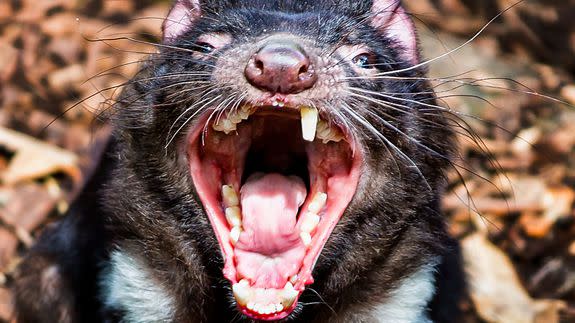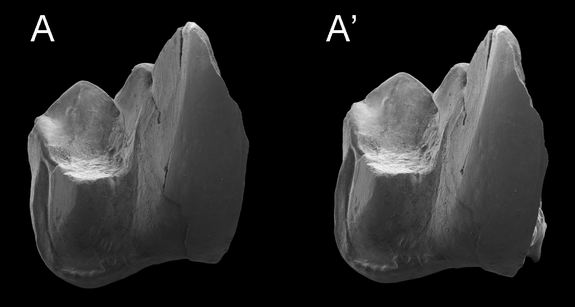Australia used to be home to a flesh-eating marsupial because of course it did

Australia has plenty of scary animals, and now you can add a large flesh-eating marsupial to the list.
A distant cousin of the Tasmanian devil, but double the size at roughly 20 to 25 kilograms (44 to 55 lbs), the extinct animal has been named the "Whollydooleya tomnpatrichorum."
SEE ALSO: Young seal thinks he's people; makes the public toilet his new home
The hypercarnivore, which means more than 70 percent of its diet is meat, was identified from a fossil found at a site called New Riversleigh located in north-western Queensland. Based off its teeth, it's an animal you definitely wouldn't want to mess with.
"W. tomnpatrichorum had very powerful teeth capable of killing and slicing up the largest animals of its day," University of New South Wales Professor Mike Archer says in a statement.

Image: Suzanne hand
Archer has written an article which details the marsupial's features, based off a fossil of the animal's lower molar tooth discovered at New Riversleigh.
The discovery is helping researchers gain a further understanding into the late Miocene period, around 12 to 5 million years ago, which is a little-known period of Australia's history. Fossils from land animals from the period are extremely rare.
The molar from the freaky marsupial was discovered in an area called Whollydooley Hill, a fossil-rich site ripe for discovery.

Image: Mike archer
"New Riversleigh is producing the remains of a bevy of strange new small to medium-sized creatures, with Whollydooleya tomnpatrichorum, the first one to be described," Archer says.
"These new discoveries are starting to fill in a large hole in our understanding about how Australia's land animals transformed from being small denizens of its ancient wet forests to huge survivors on the second most arid continent on Earth."

Image: unsw
The New Riversleigh site was found with remote sensing with the assistance satellite data in 2012, with exploration of the area beginning in 2013, thanks to funding from the Australian Research Council and a grant from the National Geographic Society.
We wager there's still a whole host of frightening-sounding marsupials yet to be discovered.
